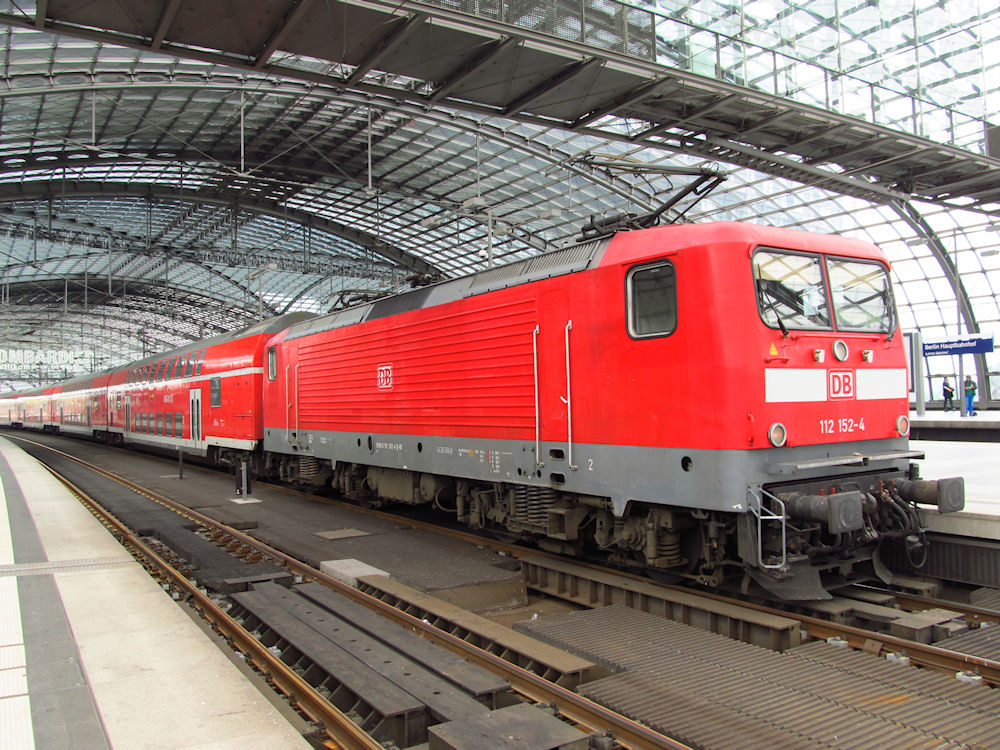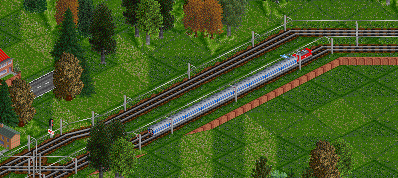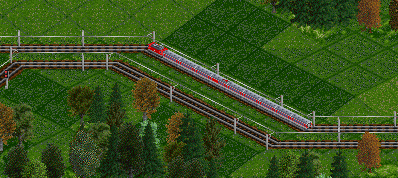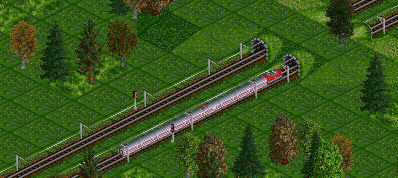Description
Due to the German reunification in 1990 passenger streams changed drastically, resulting in completely new demands for passenger traffic. This in turn caused a certain engine shortage, as the modern class 243 developed in East Germany and introduced in the mid 1980s only offered 120 kph top speed, while the Bundesbahn did not develop any new types after the class 111 as the focus had been on the developments for high speed traffic and the ICE. So, suddenly there was demand to get an engine for fast passenger services.
The class 212 (or 112 after 1994) was the result. It is a variant of the proven design of class 243, which had been design for 160 kph anyway. As that had not been needed for the East German network at the time, the transmission was adapted to only allow 120 kph. However, as an unforeseen side effect, it allowed the fast introduction of this class years later.
About 120 units were built, most of them in the subvariant 112.1 which can be distinguished from the original class 243 based on the lights. The main service field for the engines were Interregio trains, until these were discontinued in the very early 21st century. The engines were then shifted over into the regional services. By now, the engines are being retired and replaced by modern EMUs, as there are more and more problems getting spare parts especially for the electronics.
In the set, the main reason for buying this type is missing. That makes it rather difficult to define a fitting usage field. The engines of class 111 will not yet need replacing, there are EMUs as alternatives available, and for express trains you can use either class 103 or class 120, which in turn will be replaced in the late 1990s by class 101. So it is up to the player to decide whether to use this type for regional services.
Images and Screenshots

(© Janusz Jakubowski / CC-BY-SA-2.0 via Wikimedia Commons)
A regional train with class 112 in Berlin

In the 1990s the engine was mainly used to haul Interregio trains, as can be seen here.

It is possible to use the engine for Intercity trains, but these trains were rarely hauled by this type. The faster types BR 103 and BR 120 were the obvious choice.

A BR 112 in front of a Intercity in the latest livery after 1997 is a rather rare sight, as the newly developed and faster BR 101 took over just about all Intercity services. By 2004 all BR 112 were shifted over to regional services.
Technical Data
| Name | BR 112 |
|---|---|
| Built | 1990- |
| Power | 5650 hp |
| Tractive effort | 248 kN |
| Speed | 100 mph |
| Usage | fast trains, passenger trains |
| Type of terrain | everywhere |
Load table
| Speed | train weight |
|---|---|
| 100 mph | 1800t |
| 88 mph | 2200t |
| 75 mph | 3050t |
| 62 mph | 3750t |
| 50 mph | > 4000t |
The values in the table are valid for a flat track.
Links
| Wikipedia | RailfanEurope |
